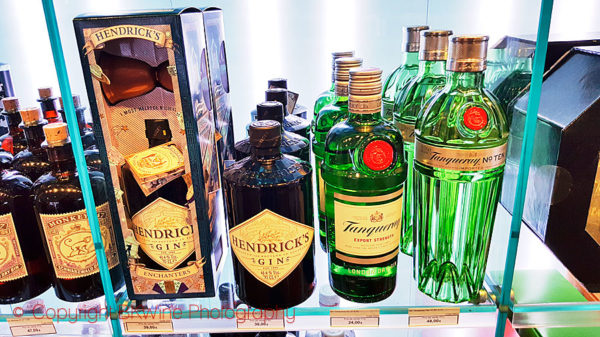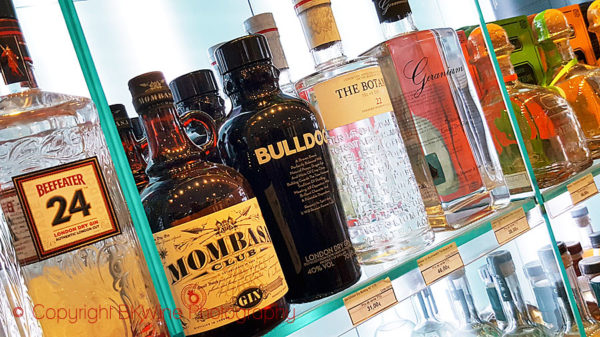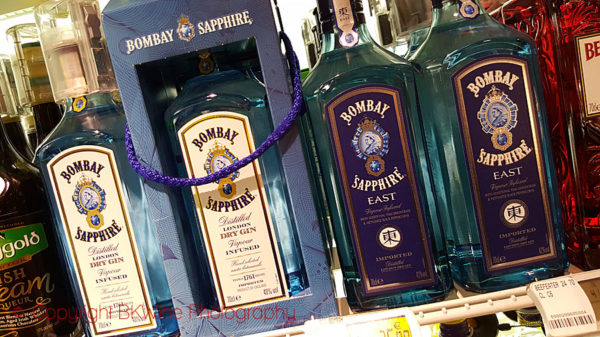EU law defines three categories of gin:[1]
- “Gin” is the basic category. Flavourings, either natural or artificial, are mixed (cold compounded) with the base spirit and other approved colourings and sweeteners are added. A molasses-based spirit may be used (often cheaper), giving a softer feel.
- “Distilled Gin” is made by redistilling the mixture of diluted base spirit, juniper berries and other natural botanicals. Natural or nature-identical flavourings may be added. For most premium gins, a grain-based spirit will be used, giving a crisper feel.
- “London (Dry) Gin” is identical except that no flavours may be added after distillation. This does not necessarily imply higher quality: some botanical flavours are damaged by the heat and it is easier to allow a particular aroma to stand out if it is processed separately and then added.
The author of this four-part essay is Andrew de Csillery. The essay was written in autumn 2015 as part of the studies and examination for a wine and spirits qualification. The views expressed and the conclusions reached are those of the author alone.
The essay is made up of four parts:
- Introduction and the History of Gin from the Middle Ages to 1985
- Production of Gin, how process variations result in different flavours
- The revival of Gin over the past 30 years
- Conclusions and Commentary, how the category and market may develop over the next 10 years (including appendix and literature list)

There are three primary distillation methods to extract the flavours of the botanicals:
- The botanical and diluted spirit mixture is immediately distilled. Gordon’s and Tanqueray believe that this avoids “stewing” the flavours.
- The botanicals are left to macerate in the diluted spirit for up to 48 hours before distillation. Beefeater believes that this helps to fix better the aromas.[2]
- The spirit vapour is infused as it passes through the botanicals, which are suspended in a basket above the spirit. Bombay Sapphire believes that this produces a lighter and subtler style.[3]
The choice of botanicals has the greatest impact on a gin’s flavour profile. Juniper must be present. Coriander, providing spicy notes, is in all premium gins. The most volatile aromatic, citrus peel, is often present. Angelica and orris root help to bind the other more volatile aromatics and provide length and substance. Over 200 botanicals may be used.[4]

Another key variable is the cut points that define what goes into the final distillate. The aromatic compounds evaporate in a specific order depending on their volatility. Citrus aromatics come across first, followed by juniper and then coriander, finishing with orris (the fragrant root of an iris) and angelica roots. Choosing late or early cut points varies the proportion of each flavour.[5]
The final key variable is the bottling strength. If the gin is diluted too much, some of the more volatile aromas will be lost.[6] Premium gins are typically at least 40% abv with many in the range 43-47% abv.
The essay is by Andrew de Csillery made up of four parts:
- Introduction and the History of Gin from the Middle Ages to 1985
- Production of Gin, how process variations result in different flavours
- The revival of Gin over the past 30 years
- Conclusions and Commentary, how the category and market may develop over the next 10 years (including appendix and literature list)

[1] Gin is defined under EU law as a 96% abv highly rectified spirit, flavoured predominantly with juniper, but also with other flavourings, diluted to a minimum retail strength of 37.5% abv.
[2] Discussed and explained during guided tour of the Beefeater distillery in London, 4/9/15.
[3] Discussed and explained during guided tour of the Bombay Sapphire distillery in Laverstoke, 8/9/15.
[4] The most common include cinnamon and cassia bark (sweet tropical notes), almond (marzipan), liquorice (spicy and sweet), and other spices such as cardamon, ginger, cubeb berries, grains of paradise and nutmeg. The flavour evolution in recent years is discussed in the third section.
[5] The design of the still, in particular the amount of reflux, can also be used to influence the relative proportions of more or less volatile congeners.
[6] For example, citric aromas will be held at 40% abv and above but may be lost below this strength.









